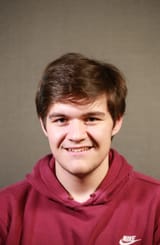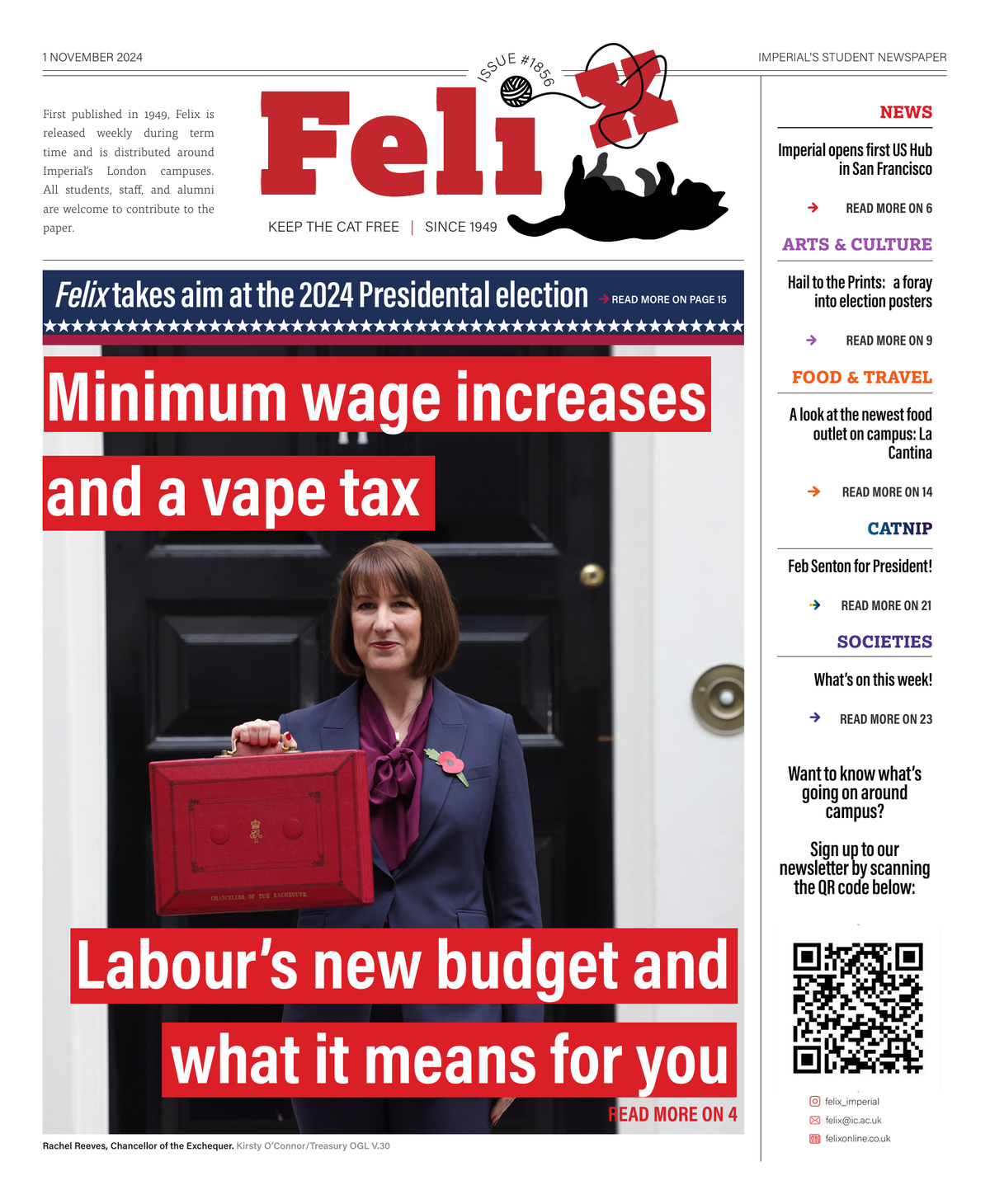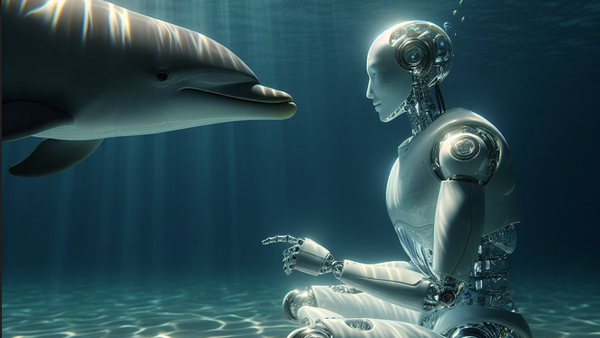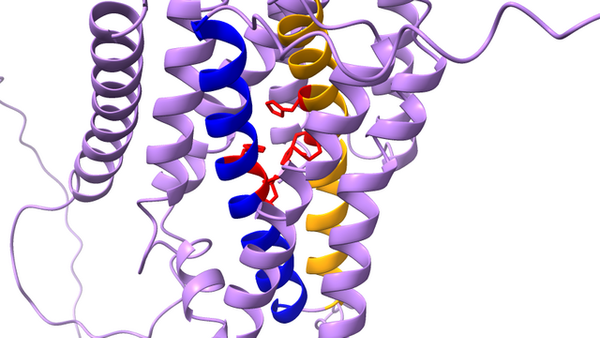ICLR celebrate EuRoC success
Felix sits down with ICLR members Andrei Paduraru, Soham More and Pablo Duhamel to discuss the trials and triumphs of launching Nimbus 24
Nimbus 24, Imperial College Rocketry Team’s (ICLR) latest creation, was a symbol of both prophetic irony and the prevailing power of aspiration and hard work. The rocket, named after dark rain-bearing cloud, faced its fair share of weather-related obstacles at this year’s European Rocketry Challenge (EuRoC).
Created in 2020 by the Portuguese Space Agency, the competition brought together 25 teams from some of Europe’s top technical universities to compete in rocket launching. ICLR entered with their fully student-developed, 3km liquid bi-propellent rocket, Nimbus 24. This was ICLR’s fourth time attending the competition, and their first launch with their new engine, THANOS-R.
“Throughout the year we have done loads of testing. Last year we did something like 20 static fires, all at our Silwood campus.”
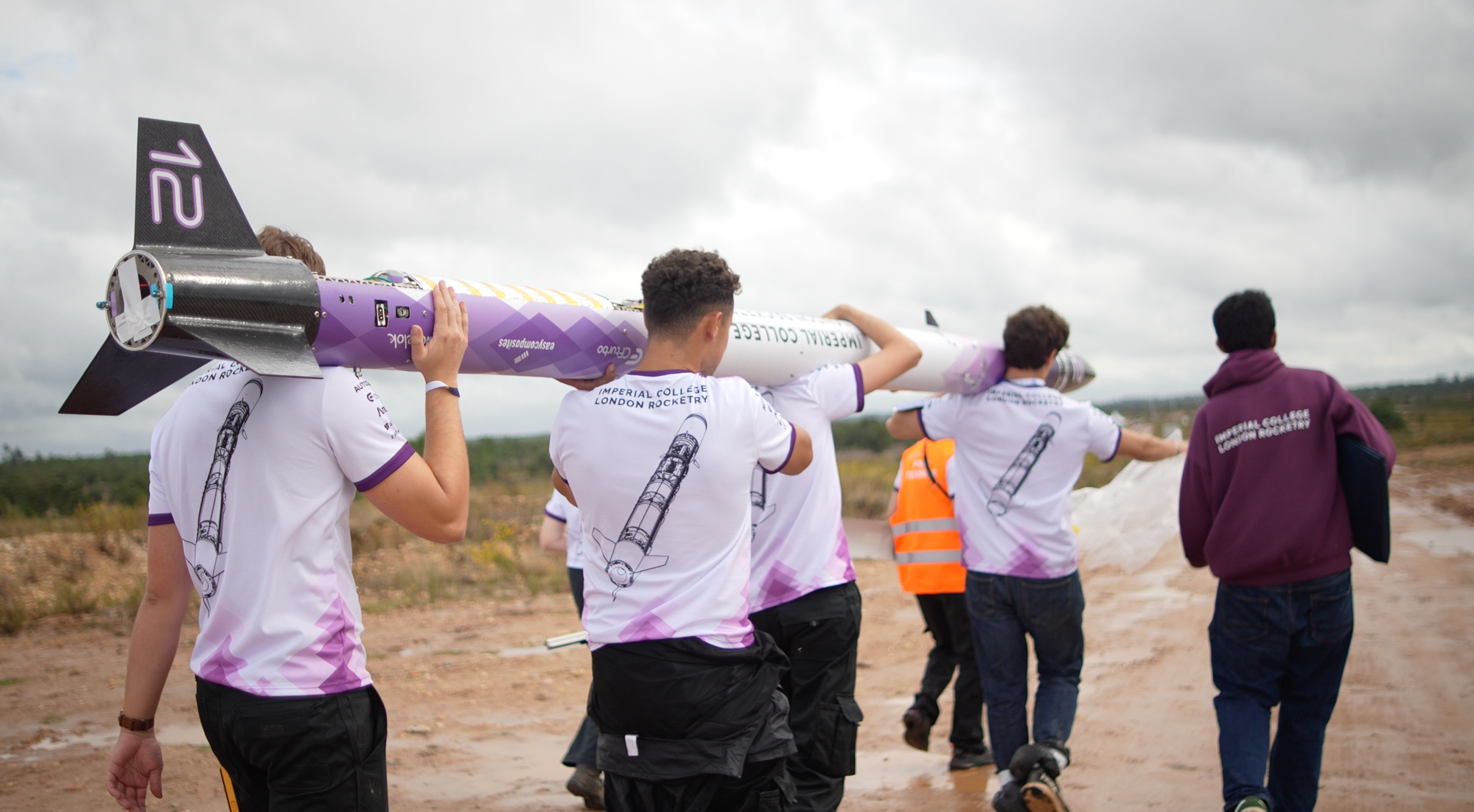
The team achieved flight readiness on 11th October, the first day scheduled for launches of the competition. At 4:57pm, Nimbus 24’s Thanos-R engine ignited for the 20th time this year and the rocket soared to 2.6km altitude, making ICLR the closest team to the 3km target of the category across the entire competition.
Launch of Nimbus 24. ICLR
Despite initially being told by officials to abandon all hopes of launching due to poor weather conditions, as if scripted by fate, an opening in the sky provided them with the perfect window to launch.
Andrei reflects on this moment: “our team, when they saw the rocket launch, screamed so loud that we got given a safety penalty. It was our first fully student developed rocket, and everyone was really happy. We can’t really blame EuRoC – rules are rules”.
The team entered the competition with a fully student-developed, 3km liquid bi-propellant rocket. Nimbus 24 featured an aluminum airframe with mass-optimised aluminum alloy structures, composite bodywork, a 3U deployable payload and the highest thrust student rocket engine seen in the UK. Weighing in at 55kg dry and measuring 4.5m long, the top speed of Nimbus during the launch was 257 m/s (963 kph), attaining a maximum acceleration of 7.8g. ICLR came second in three categories in the competition: payload, team, and flight award. The team award has been a challenge for ICLR in previous competitions, but this year they made significant progress, amassing a total of 191 out of 200 points. The team claim they would’ve potentially even won the flight award if it wasn’t for their aforementioned safety penalty picked up for celebrating their launch.
Members of the team expressed their thanks to the Aeronautics department, Mechanical Engineering department and technical supervisor Dr Aaron Knoll.
“None of this would be possible without them. We are, as of today, the only team in the UK that has its own test site (Silwood Park). We thank the Aero and Mechanical engineering departments for granting us this space. We’d also like to thank Dr. Aaron Knoll; he ensures we abide by the college rules while being a massive supporter of what we do.”
Following their success at EuRoC 24, the team set their ambitions to two main projects. The first is to build and test a new bi-propellent rocket, in preparation for next year’s competition, and the second is to build a self-landing rocket using thrust gimbaling, much like SpaceX.
When we saw the rocket launch, we screamed so loud that we even got a safety penalty!
Reflecting upon their time in ICLR, launch team member Soham gave the following advice for those with ambitions of getting involved with rocketry.
“Show up and show an interest - I see this as a push and pull kind of thing – you know you only get out as much as you put in. We’re happy to teach and mentor anyone and accommodate people proposing their own projects too.
When I first came to Imperial, I didn’t know anything about rocketry, I wasn’t particularly interested in space or rockets – I just wanted to do something cool for the year. I showed up to the first meeting and I got placed in the airframe team, and just slowly spending time in the scene really helps build your passion for rocketry.”
Pablo adds, “This experience over the past 4 years of doing rocketry will definitely help me when I start applying for jobs, the first thing I want to talk about in interviews is what I did for rocketry, probably not anything I did during my labs.”
On behalf of Felix, we’d like to congratulate the team on their successful launch of Nimbus 24 and wish them all the very best for their future rocketry endeavours.


